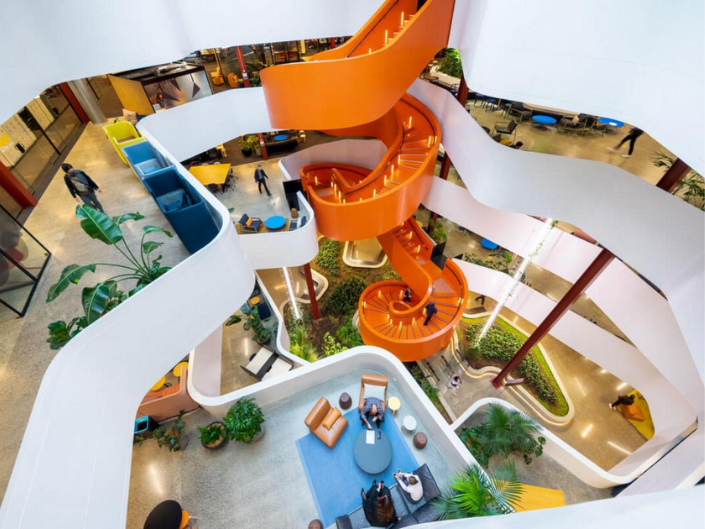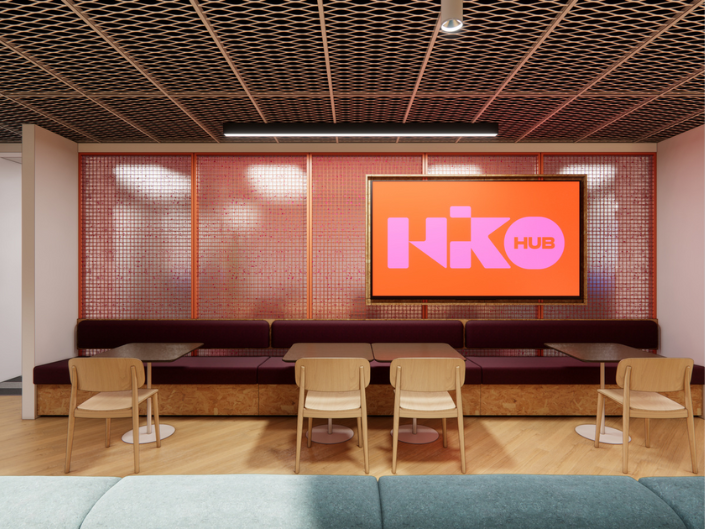The Value of Coworking Spaces with Health & Wellness Facilities
- Details
Why Blending Work and Wellbeing Leads to Happier, More Productive Teams
Work-life balance isn’t just a buzzword anymore, it’s a real factor people consider when choosing where and how they work. As flexible work continues to grow and evolve, the best coworking spaces are no longer just about fast Wi-Fi and good coffee. They’re becoming holistic environments that prioritise health, mindfulness, movement, and community.
Enter wellness-focused coworking spaces, shared work environments that integrate facilities like yoga studios, gyms, meditation rooms, healthy snack stations, ergonomic furniture, natural light, and even saunas or nap pods.
But beyond just being trendy perks, what real value do these health and wellness features offer? In this article, we’ll explore how coworking spaces that focus on wellbeing are transforming the way people work—and why they may just be the future of the office.

The Shift Toward Wellness in the Workplace
The modern worker is more conscious than ever of their mental, emotional, and physical wellbeing. Here’s why wellness is becoming central to where people choose to work:
- Burnout is on the rise: After years of blurred boundaries, many workers are prioritising mental health and seeking balance.
- Hybrid work models are here to stay: Employees want flexibility but also want access to spaces that support their health and productivity.
- Talent retention and attraction: Employers are using wellness offerings as a key part of their employee value proposition.
- The office is now an experience: If people are going to leave the house to work, the space needs to offer more than just a desk.
Coworking spaces that meet these needs aren't just checking boxes—they’re creating ecosystems where people can truly thrive.
What Makes a Coworking Space “Wellness-Focused”?
A wellness-oriented coworking space doesn’t need to be a luxury retreat, but it usually includes a mix of physical features, programs, and cultural elements that support wellbeing. Let’s break them down:
1. Onsite Health Facilities
- Gyms or fitness studios
- Yoga or pilates rooms
- Shower and changing facilities
- Bike storage
2. Mindfulness Spaces
- Meditation rooms or quiet zones
- Soft seating and calming design
- Natural light and ventilation
- Green spaces or indoor plants
3. Healthy Amenities
- Filtered water stations
- Healthy snack options
- Organic or plant-based café options
- Wellness event programming
4. Ergonomics & Environment
- Sit-stand desks and ergonomic chairs
- Soundproof booths or quiet zones
- Air purifiers, natural materials, acoustic design
- Non-toxic paints and sustainable finishes
5. Community & Culture
- Regular wellness workshops or movement classes
- Mental health support or resources
- Social connection through member events
- Encouragement of breaks, movement, and balance

The Tangible Value for Members
So how do these features translate to real benefits for individuals who use the space? Let’s dig into the tangible returns on wellness-focused coworking.
1. Improved Productivity
Movement and mindfulness aren’t distractions, they’re productivity tools. Studies show that physical activity increases focus, while exposure to nature and calm spaces enhances creativity. Whether it’s a lunchtime yoga session or a walk in the fresh air, coworking members report getting more done in less time when their space supports their body and mind.
2. Better Mental Health
Having access to quiet areas, wellness resources, and stress-reducing environments can make a big difference for workers dealing with anxiety, burnout, or simply the daily pressures of business. In many ways, these features act as a proactive mental health measure.
3. Increased Retention and Loyalty
People stay where they feel supported. Coworking spaces that genuinely care about members' wellbeing create a strong sense of belonging and loyalty, something that’s especially valuable for freelancers, remote workers, or startups seeking a "home base."
4. Enhanced Networking and Social Connection
Wellness activities often create relaxed, organic opportunities for connection, yoga before a coffee catch-up, a cooking class after work, or a wellness seminar that sparks conversation. These shared experiences lead to deeper, more meaningful networking.
The Business Case for Wellness-Focused Coworking
If you’re thinking about launching or upgrading a coworking space, here’s why adding wellness features makes good business sense too.
1. Higher Occupancy and Premium Pricing
Coworking spaces with wellness offerings can often charge 10–25% higher membership rates, especially in urban centres. Why? Because they offer more value and align with what modern professionals are looking for.
2. Increased Member Retention
Wellness-focused spaces create strong emotional connections with members. That translates into longer memberships, lower churn, and more predictable revenue.
3. Attracting Corporate Teams
Many companies are decentralising and looking for spaces where teams can gather weekly or monthly. A healthy, holistic environment appeals to both employers and employees.
4. Positive Brand Identity
A wellness-integrated space doesn’t just offer a place to work—it becomes a lifestyle brand. This enhances marketing, PR, and word-of-mouth referrals.
Real-Life Examples of Wellness-Driven Coworking
Let’s take a look at a few inspiring coworking spaces that are embracing health and wellness in innovative ways.

The Commons (Australia)
With multiple locations across Australia, The Commons includes nap rooms, wellness studios, and a curated events program featuring everything from sound healing to HIIT classes. Their philosophy: workspaces should help you feel better, not just work harder.

Second Home (UK & Portugal)
Second Home combines biophilic design (think plants everywhere!) with cultural programming, meditation pods, and healthy food options. Their unique architectural approach proves that wellness can be part of every square metre.

The Great Room (Singapore, Bangkok, Hong Kong)
Offering calming design, ergonomic setups, and regular wellness events like breathwork and mindfulness sessions, The Great Room integrates wellbeing without compromising professionalism.
Designing a Wellness-First Coworking Space: Key Considerations
Thinking of launching a space that prioritises wellness? Here are a few things to consider:
1. Understand Your Audience
Are you targeting health professionals, creatives, digital nomads, or corporate teams? Tailor your wellness offerings to suit their values and needs.
2. Start with the Basics
You don’t need a sauna or an infrared pod to begin. Even thoughtful design, good lighting, ergonomic furniture, and a few wellness-focused events go a long way.
3. Collaborate with Experts
Partner with local wellness professionals, yoga instructors, nutritionists, and psychologists to host regular workshops or provide on-demand support.
4. Don’t Just Build It, Live It
Wellness culture should be embedded into how your team operates. Lead by example with flexible hours, mindful practices, and a calm, encouraging tone.
Future Trends: What’s Next for Wellness in Coworking?
As the line between work and life continues to blur, we’re likely to see even more integration of wellness into shared workspaces. Here’s what’s on the horizon:
- On-demand wellness services (massage, therapy, coaching)
- AI-driven health data for space optimization (lighting, temperature, movement)
- Community wellness tracking (anonymous check-ins, support circles)
- Expanded food and nutrition programs
- Nature-based coworking (outdoor working pods, garden desks, forest offices)
A Healthier Way to Work
Coworking spaces with health and wellness facilities aren’t just a passing trend, they’re a response to what today’s professionals truly need. When people feel physically energised, mentally calm, and emotionally connected, they do better work, build stronger relationships, and stay longer in the spaces that support them.
Whether you're a freelancer looking for balance, a business wanting to boost team wellbeing, or an entrepreneur building your own coworking brand, investing in wellness is not just good for people, it’s great for business too.
In short, the healthiest workspaces are also the smartest ones.




